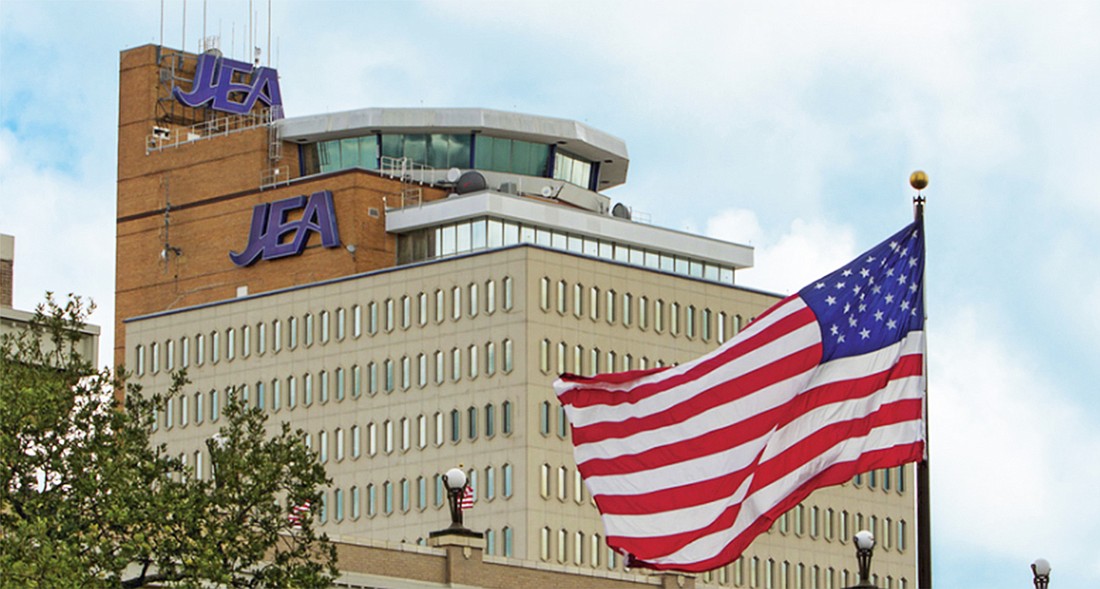Special Offer: $5 for 2 Months!
Your free article limit has been reached this month.
Subscribe now for unlimited digital access to our award-winning business news.

Jacksonville’s public utility spent more than $8 million the past 10 years to keep its aging Downtown headquarters campus functional.
JEA provided records for fiscal years 2009-18 showing that money was spent on preventive and corrective maintenance projects to keep the building habitable and operational.
The data includes expenditures for the 19-story tower and six-story customer service center at 21 W. Church St. and a six-level parking garage across the street.
JEA is the largest municipal utility company in Florida and the 10th largest in the country. It serves more than 1 million combined electric, water and wastewater customers.
The combined 337,660-square-foot campus has been home to its 760 corporate employees since JEA purchased the 52-year-old buildings in 1988.
The utility has spent a little more than $8 million on repairs since 2009, which JEA CEO and Managing Director Aaron Zahn said is one reason executives and the board of directors want to build a new campus.
“It certainly sounds like a significant amount of money for a building that you own just to maintain it,” Zahn said Tuesday.
“What it’s not accounting for is all the deficiencies in the building,” he said.
Making repairs
A breakdown shows $3.9 million was spent on the tower since 2009.
JEA spent about $1.2 million on heating, ventilation and air conditioning issues, the largest share of the $1.6 million in total HVAC costs throughout the campus.
JEA paid a little more than $1 million in 2010 to repair and replace HVAC systems in the tower and customer care center. In 2012, more than $357,000 was spent on chilled water systems.
The company paid nearly $900,000 throughout the site since 2009 to upgrade security systems like interior and exterior surveillance cameras, lighting, employee access infrastructure, fire alarms and other equipment.
Security overhauls in 2010 and 2014 account for $648,400 of those costs.
The largest expense categories comprise structural, building and roofing repairs totaling more than $5.4 million among the three sites.
A parking structure restoration project in 2010 cost $1.7 million along with about $803,000 on roofing and waterproofing at the tower.
In 2016, the utility spent $325,307 on structural repairs, primarily on elevator restoration at the tower.
“That’s just the duct tape and chewing gum approach,” said Zahn.
“That’s not actually solving the problems. It’s just getting a little longer life cycle out of the buildings,” he said.
The repairs do not include day-to-day expenses. According to a utility spokesperson, JEA spent an average of $128,783 per month over the past three years on operating costs.
Zahn, who the board installed as CEO in November, said those amounts are much lower than what is needed to upgrade the campus for a longer life span.
“It’s what we’ve actually spent, what we would need to spend to upgrade the facility and the risk if we don’t find a new headquarters,” he said.
In 2016, JEA commissioned a study with the help of Fairlead Commercial Real Estate LLC., The Haskell Company and England-Thims & Miller Inc. that investigated the costs of building a new headquarters versus upgrading the existing one to last another 20 years.
The renovation scenario presented obstacles JEA said were cost prohibitive. It concluded the campus is too large for JEA’s 760 employees and that “many unknown conditions create the need for a large contingency.”
The study determined JEA would need to spend $98 million on capital expenditures just to maintain the campus. That route includes building a new headquarters after year 21 at a higher cost compared to pursuing new construction earlier.
At the time, JEA concluded it would cost about $68 million to build a new corporate home.
Other challenges
One of the biggest challenges Zahn said JEA faces with the current headquarters is the risk of systems failing and services being interrupted.
“If we have business interruption due to our headquarters, it could cost us over $100 million each month,” Zahn estimated.
“We’re taking a lot of steps in the meantime to be more conscientious of business interruption risks, but at the end of the day that’s a driver,” he said of pursuing new construction.
Another issue is employee morale.
“We already ask our employees to do a lot,” he said.
“We ought to at least give them a safe, reliable and modern working environment so they can focus 100 percent of their time on serving the customer.”
The future
During the week of April 8, the JEA board of directors will choose how to proceed with a new corporate headquarters.
The board is expected to reach a decision from a field of three proposals received in January.
The finalists are sites near TIAA Bank Field; adjacent to the Kings Avenue parking garage on the Southbank; and Downtown near the Duval County Courthouse and State Attorney’s Office.
JEA’s procurement code allows the board to keep key financial details of those proposals confidential while it negotiates with each firm.
“It’s an opportunity for us to truly change the culture and drive our employees to interface with our customers in a way that many utilities currently don’t do yet,” Zahn said.
He had no updates on negotiations.
Following a Feb. 5 meeting, JEA board Chair Alan Howard said the policy allows JEA to negotiate the best price while not putting those firms at a competitive disadvantage.
“We’ve not established a maximum budget,” Howard said after the February meeting.
“The goal here is to get the best value for JEA, its customers and the community.”
Your free article limit has been reached this month.
Subscribe now for unlimited digital access to our award-winning business news.